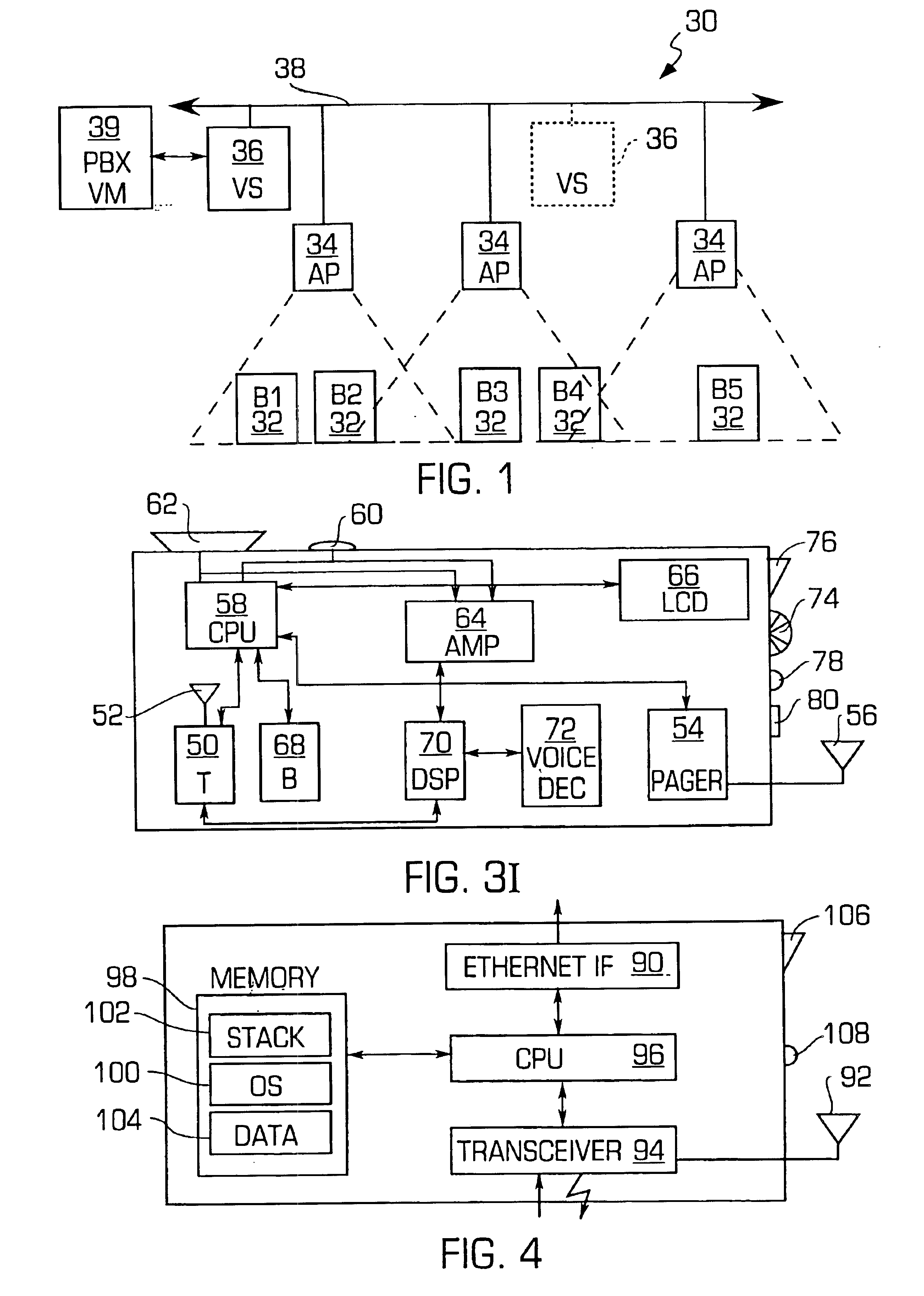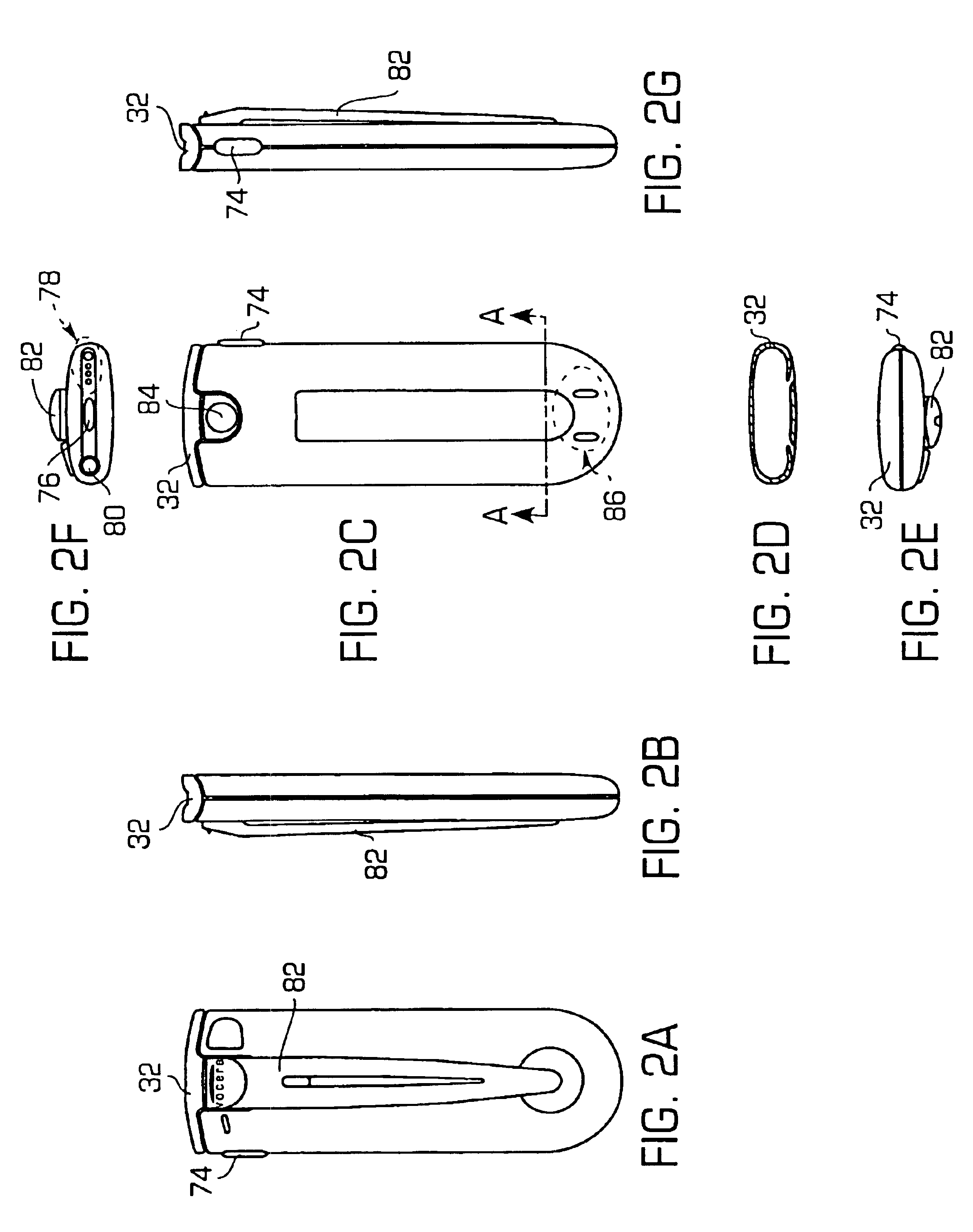Voice-controlled wireless communications system and method
a wireless communication system and voice control technology, applied in the field of voice control wireless communications system and method, can solve the problems of unsatisfactory, limited access, and difficult to have at all times, and the smallest cellular phone is still fairly bulky and difficult to have available at all times, and the cellular phone also still does not have reliable communication
- Summary
- Abstract
- Description
- Claims
- Application Information
AI Technical Summary
Benefits of technology
Problems solved by technology
Method used
Image
Examples
Embodiment Construction
[0029]The invention is particularly applicable to a voice-controlled wireless communications system that uses Bluetooth or IEEE 802.11 as a communications protocol and a Ethernet communications / computer network and it is in this context that the invention will be described. It will be appreciated, however, that the voice-controlled wireless communications system in accordance with the invention has greater utility since it can be implemented using various different communication protocols and various different computer networks.
[0030]FIG. 1 illustrates an example of a preferred embodiment of the voice-controlled wireless communications system 30 in accordance with the invention. In particular, the system comprises a plurality of wireless user badges (B1-B6 in this example) 32, one or more wireless access points (AP) 34 and one or more central computers (VS) 36, such as a server computer, as shown. In this figure, a local area network wireless communications system is shown that perm...
PUM
 Login to View More
Login to View More Abstract
Description
Claims
Application Information
 Login to View More
Login to View More - R&D
- Intellectual Property
- Life Sciences
- Materials
- Tech Scout
- Unparalleled Data Quality
- Higher Quality Content
- 60% Fewer Hallucinations
Browse by: Latest US Patents, China's latest patents, Technical Efficacy Thesaurus, Application Domain, Technology Topic, Popular Technical Reports.
© 2025 PatSnap. All rights reserved.Legal|Privacy policy|Modern Slavery Act Transparency Statement|Sitemap|About US| Contact US: help@patsnap.com



